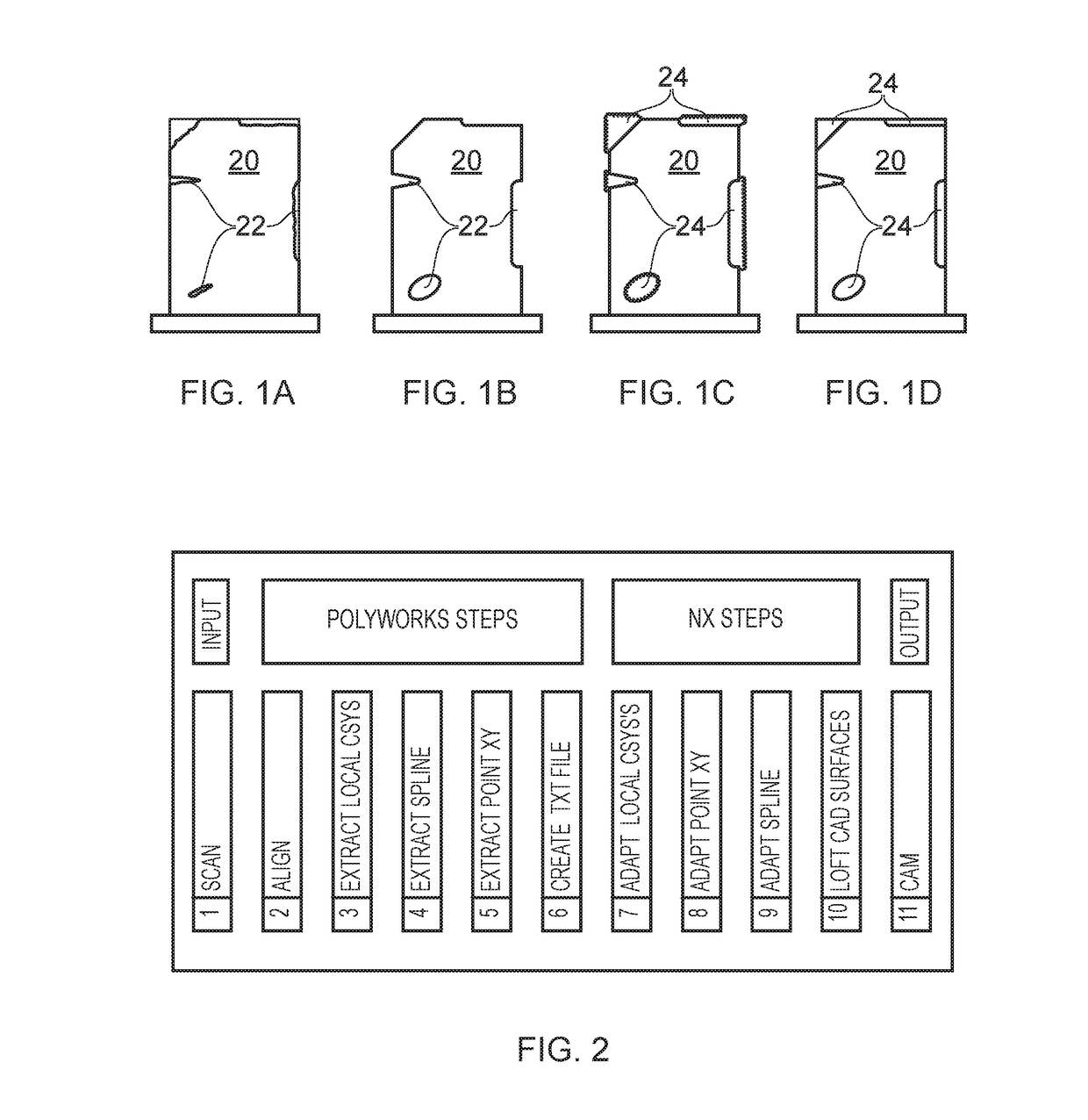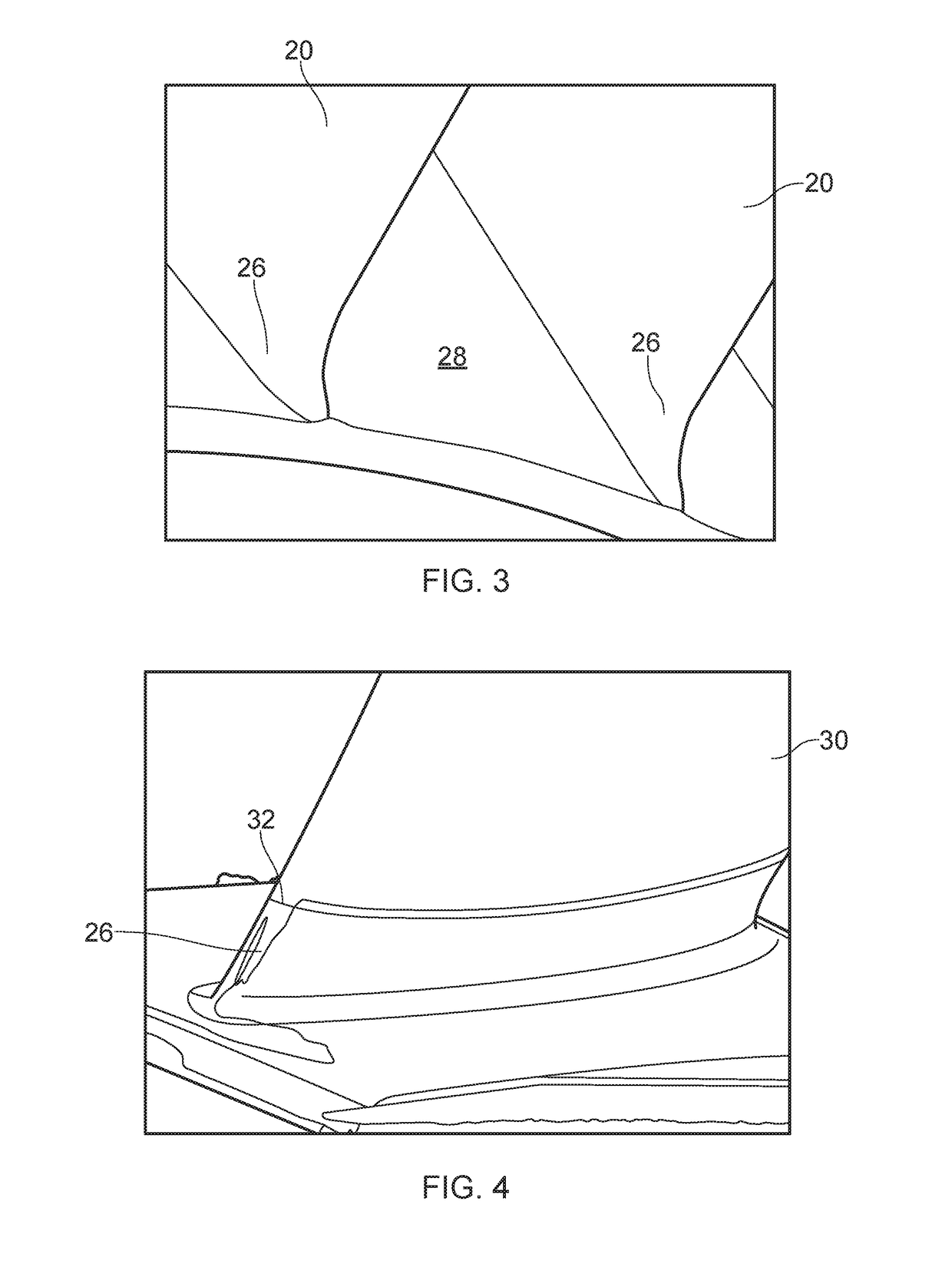Adaptive Repair Method for Aerofoil Blades
a technology for aerofoil blades and adaptable repair methods, applied in the field of repair/maintenance of aero engine components, can solve the problems of inability to consider what to do in an area where there is no prior art method, slow repair methods, and high cost, and achieve the effect of improving speed and processing tim
- Summary
- Abstract
- Description
- Claims
- Application Information
AI Technical Summary
Benefits of technology
Problems solved by technology
Method used
Image
Examples
Embodiment Construction
[0041]FIGS. 1A to 1D illustrate the steps of a typical repair process on a component 20. At each stage of the process highly skilled labour is required to perform each task to the required standards for aero engine repairs.
[0042]The first step, shown in FIG. 1A, is sentencing. This requires a skilled inspector to identify and classify the damaged area(s) 22 of the component 20. The component 20 is the cleaned, as illustrated in FIG. 1B, to prepare the damaged area(s) 22 for material addition. FIG. 1C shows the result of the material addition step, the process of filling in the damaged area(s) 22, which is usually accomplished with welding 24 by a highly skilled welder. Finally, the result of dressing back the weld(s) 24 to restore the aerofoil surface, re-profiling, is illustrated in FIG. 1D. Again, this step requires a high level of skill.
[0043]FIG. 2 sets out the process steps of the present disclosure in their most basic form. The steps apply for both material addition (MA) and r...
PUM
| Property | Measurement | Unit |
|---|---|---|
| size | aaaaa | aaaaa |
| shape | aaaaa | aaaaa |
| area | aaaaa | aaaaa |
Abstract
Description
Claims
Application Information
 Login to View More
Login to View More - R&D
- Intellectual Property
- Life Sciences
- Materials
- Tech Scout
- Unparalleled Data Quality
- Higher Quality Content
- 60% Fewer Hallucinations
Browse by: Latest US Patents, China's latest patents, Technical Efficacy Thesaurus, Application Domain, Technology Topic, Popular Technical Reports.
© 2025 PatSnap. All rights reserved.Legal|Privacy policy|Modern Slavery Act Transparency Statement|Sitemap|About US| Contact US: help@patsnap.com



